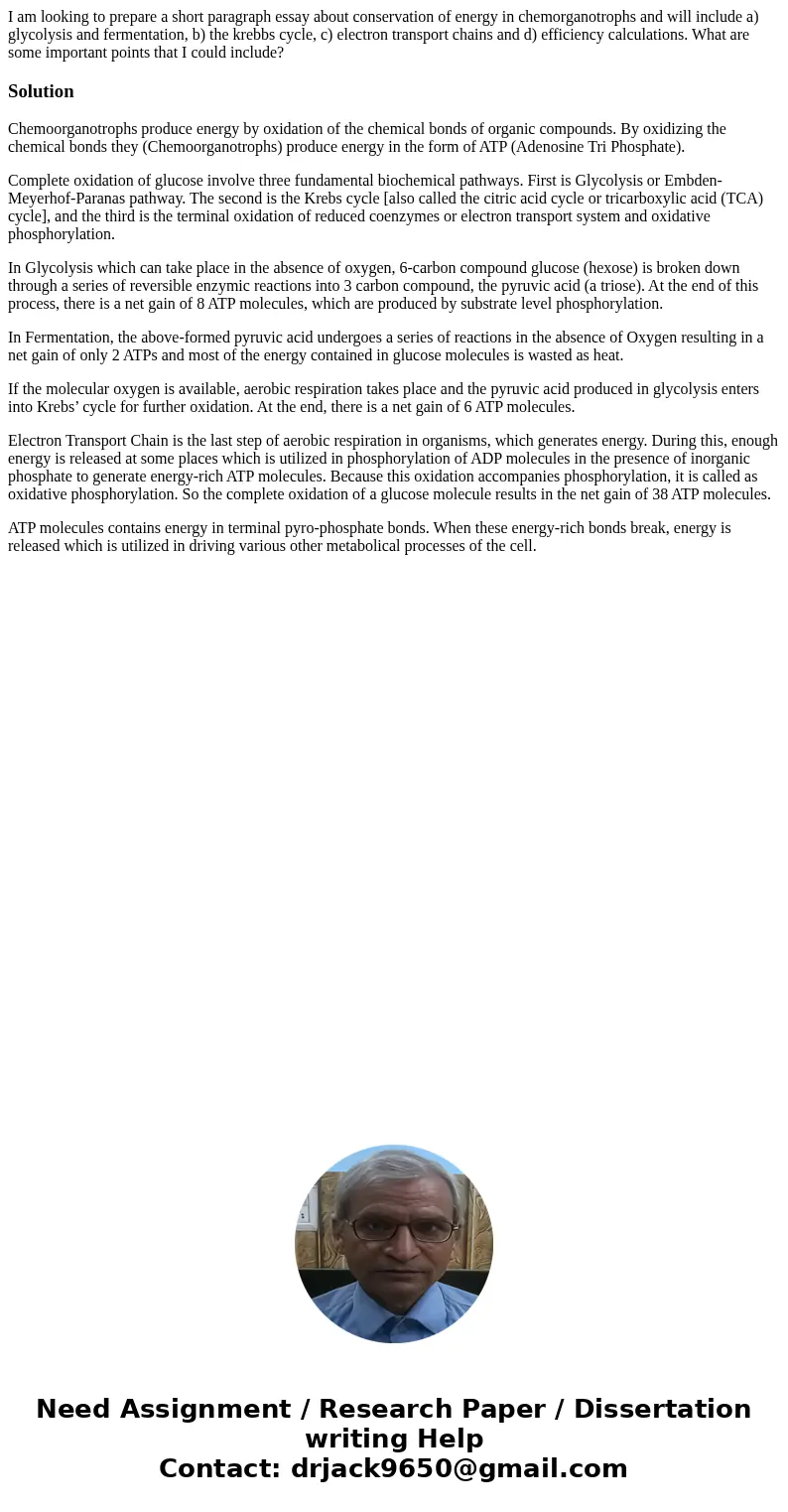I am looking to prepare a short paragraph essay about conser
I am looking to prepare a short paragraph essay about conservation of energy in chemorganotrophs and will include a) glycolysis and fermentation, b) the krebbs cycle, c) electron transport chains and d) efficiency calculations. What are some important points that I could include?
Solution
Chemoorganotrophs produce energy by oxidation of the chemical bonds of organic compounds. By oxidizing the chemical bonds they (Chemoorganotrophs) produce energy in the form of ATP (Adenosine Tri Phosphate).
Complete oxidation of glucose involve three fundamental biochemical pathways. First is Glycolysis or Embden- Meyerhof-Paranas pathway. The second is the Krebs cycle [also called the citric acid cycle or tricarboxylic acid (TCA) cycle], and the third is the terminal oxidation of reduced coenzymes or electron transport system and oxidative phosphorylation.
In Glycolysis which can take place in the absence of oxygen, 6-carbon compound glucose (hexose) is broken down through a series of reversible enzymic reactions into 3 carbon compound, the pyruvic acid (a triose). At the end of this process, there is a net gain of 8 ATP molecules, which are produced by substrate level phosphorylation.
In Fermentation, the above-formed pyruvic acid undergoes a series of reactions in the absence of Oxygen resulting in a net gain of only 2 ATPs and most of the energy contained in glucose molecules is wasted as heat.
If the molecular oxygen is available, aerobic respiration takes place and the pyruvic acid produced in glycolysis enters into Krebs’ cycle for further oxidation. At the end, there is a net gain of 6 ATP molecules.
Electron Transport Chain is the last step of aerobic respiration in organisms, which generates energy. During this, enough energy is released at some places which is utilized in phosphorylation of ADP molecules in the presence of inorganic phosphate to generate energy-rich ATP molecules. Because this oxidation accompanies phosphorylation, it is called as oxidative phosphorylation. So the complete oxidation of a glucose molecule results in the net gain of 38 ATP molecules.
ATP molecules contains energy in terminal pyro-phosphate bonds. When these energy-rich bonds break, energy is released which is utilized in driving various other metabolical processes of the cell.

 Homework Sourse
Homework Sourse